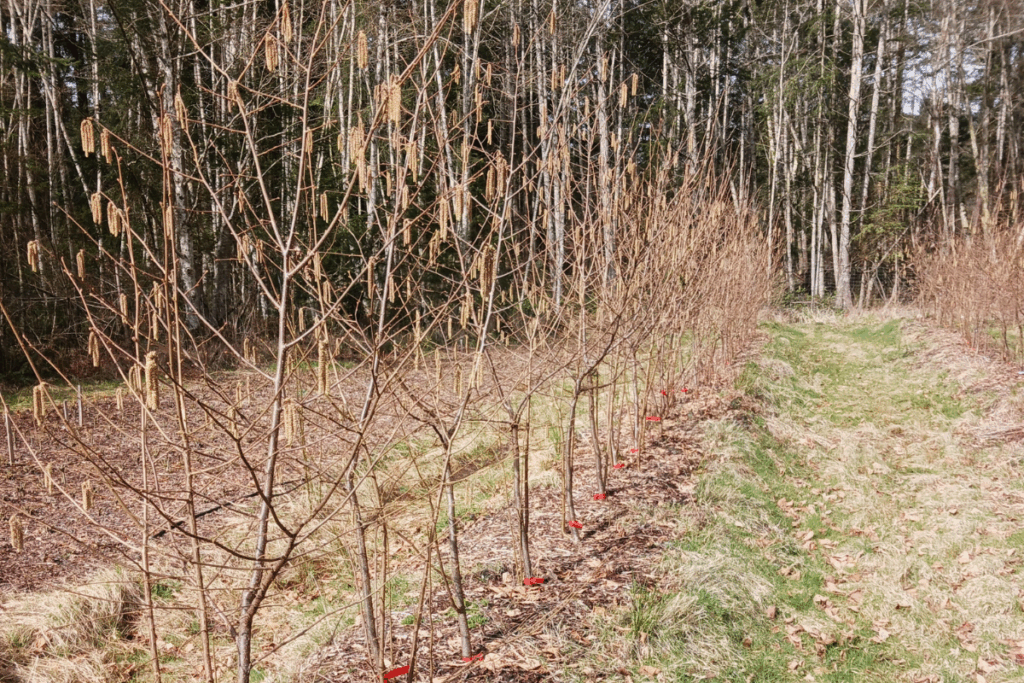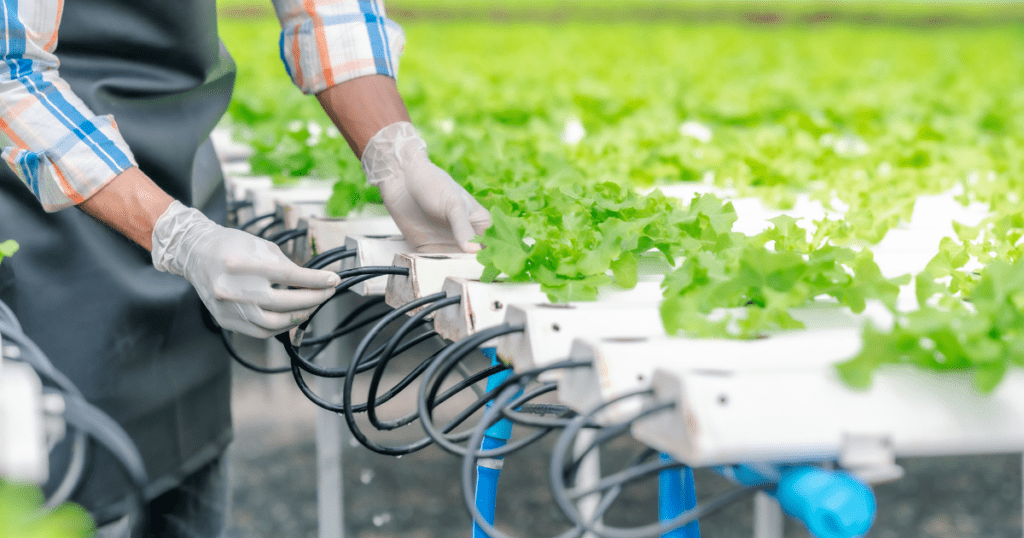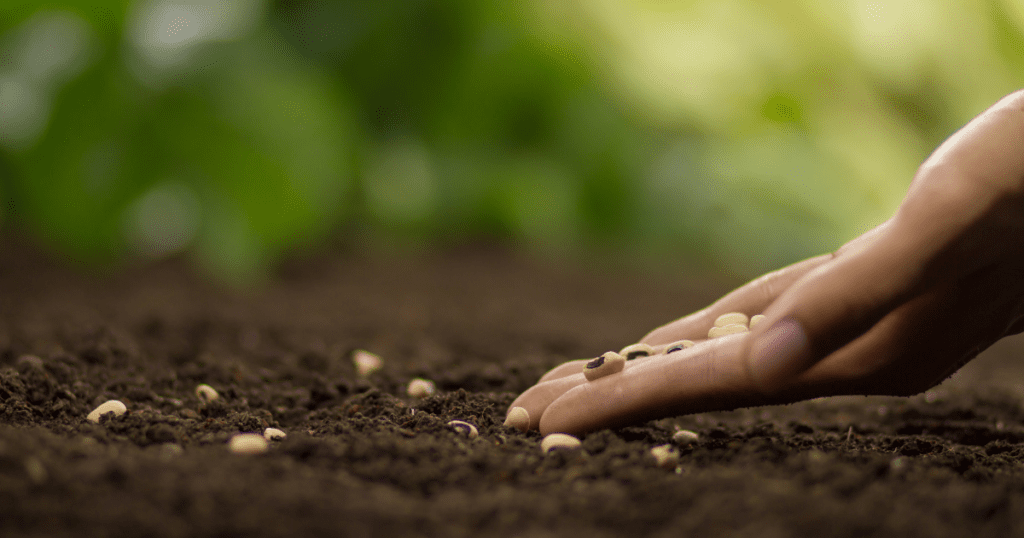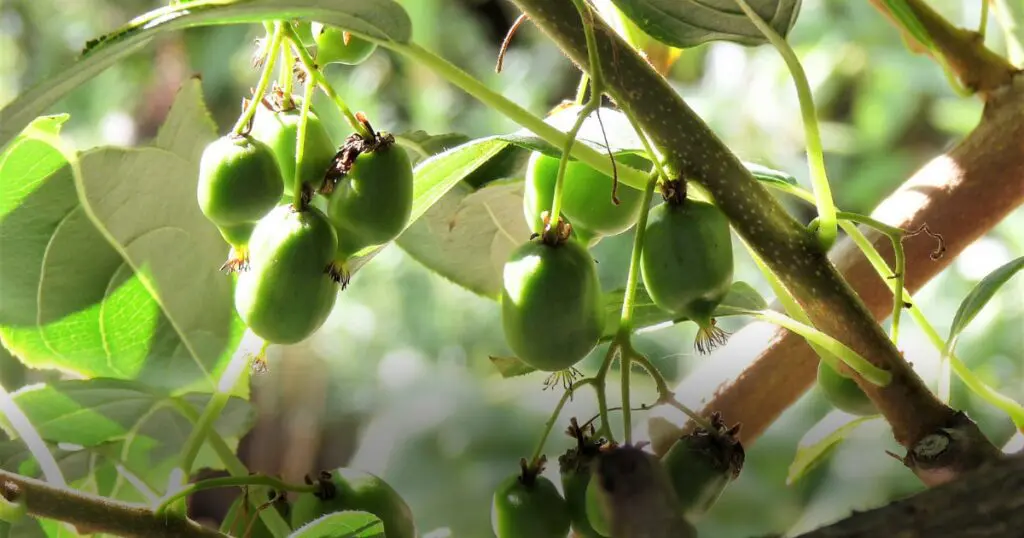
Submitted by Rob West
In the spring of 2020, when the world was thrown into uncertainty, New Society Acquisitions Editor, Rob West took a hard look at food security. With grocery shelves empty and supply chains shaky, he realized it was time to rethink how we feed ourselves. Enter the humble hazelnut.
This article takes you through his journey of planting a resilient, local food system that could provide for his family—and maybe even the whole island on which he lives—using hazelnuts as the backbone of his plan.
I dropped the egg cooler on our farmstand and made a run for it up our driveway. A crush of people who’d been jockeying for position pounced on the six dozen eggs while attempting to maintain “social distance”. People outnumbered eggs and hands were empty. The grocery store on our island – two ferries and a long and increasingly feeble looking supply chain from the British Columbia mainland – was bare not just of toilet paper and eggs but also staples such as rice, pasta, oil, and butter. Canned foods formed a veneer one deep next to disturbingly empty shelves. It was the spring of 2020 and Covid had just shut the world down and we went from seeming capitalist abundance to looking for left-handed gloves in a 1980s Moscow department store.
On our homestead, we’d already been mulling food security on a family level for years and with three freezers, home-canned produce, 100 laying hens, dozens of fruit trees, and 500 metres of garden beds, we were probably in the top few percent of people prepared for a black swan event. Yet Covid laid bare the weak points in our homestead systems (one being a lack of stored staples), our small island community, and in the wider national and global food system.
It’s a system that relies on cheap human labour, abundant fossil fuels, heavy transport, refrigeration, and an entire industrial economy. So in many ways Covid was a dress rehearsal for a future of global heating and climate disruption, soil deletion, drought, potential breadbasket failure, peak fossil fuel, and the myriad ways catastrophe may manifest itself. Taking the long view, the three days of food recommended by governments and emergency planners to fortify against disruption until “the market” is restored seems laughable if not dangerous. It’s time, we reasoned, to build a local food security and resiliency strategy for our homestead and neighbourhood that could potentially be scaled up to feed our island of 4,500 people.
The backbone of a sound food strategy is first and foremost sheer storable calories. At the end of the day it’s energy that keeps us going and when growing food for security, iceberg lettuce isn’t going to cut it. Other key elements include foods that grow with minimal human and mechanical inputs, local climatic adaptation, storage without refrigeration or masses of effort and energy such as canning, and for the long term, a full range of essential nutrients.
The Humble Nut
So what’s the solution? Perennials and specifically, the humble nut.
In our Pacific Northwest Cascadia bioregion, the clear winner is the hazelnut, also called filberts. Hazels have been cultivated by numerous cultures in North America, Europe, and parts of Asia for five to ten thousand years and with good reason. Packed with fat, carbs, protein, and nutrients all housed in a protective shell, hazelnuts are an abundant, easily harvested crop fit for humans and animal fodder. Trees can be propagated from seed or one year old whips harvested from trees in a process called stool layering after coppicing – cutting the tree at ground level – for usable wood. Nuts appear in the third or fourth year, hitting peak production in only five to seven years, and the trees live for decades, if not centuries, requiring little, if any, watering and care beyond some compost or fertilizer. A human-scale, fast-producing, almost indestructible shrub that consistently showers autumn orchard floors with easily cracked nuts. Perhaps the perfect food in the perfect package.
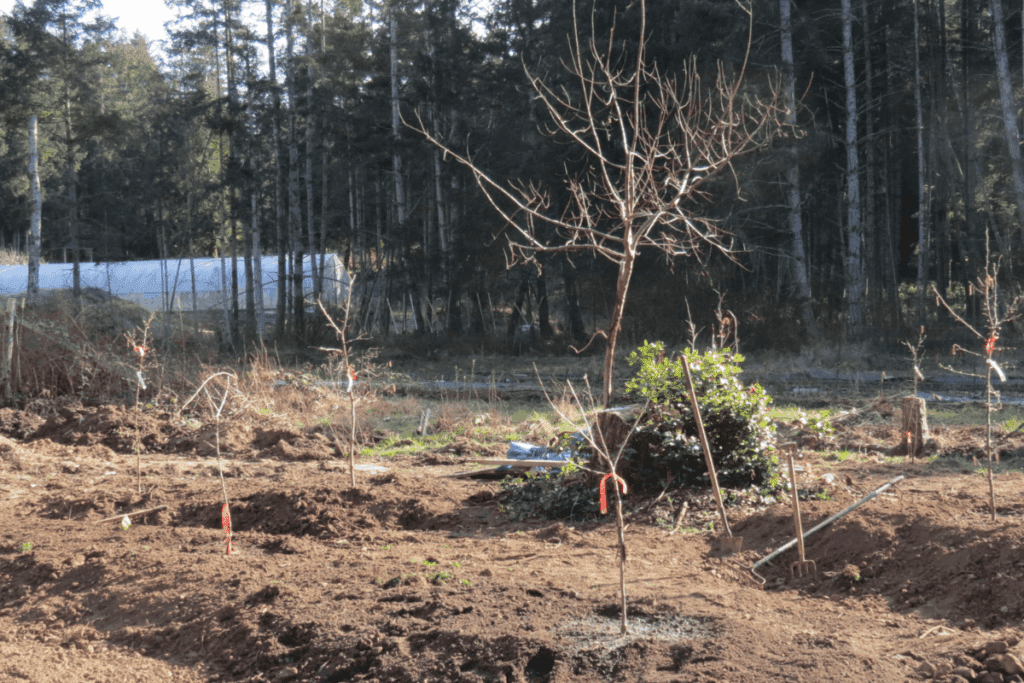
Our Pilot Project
We’d already flirted with hazels, planting six test trees in 2019 from stock developed by Oregon State University (OSU) and purchased from a local BC plant nursery. These improved cultivars are resistant to the Eastern Filbert Blight that has devastated commercial hazelnut production in past decades. The pilot planting consisted of two of each production cultivars – Jefferson – large nuts for quick hand picking, and Yamhill – smaller nuts but slightly higher yield. Hazels, like many fruiting trees, need other trees of the same species but a different cultivar for successful cross-pollination and nut production. So, to ensure a full crop we planted two compatible pollinators – Theta cultivar for Jefferson and Gamma cultivator for Yamhill.
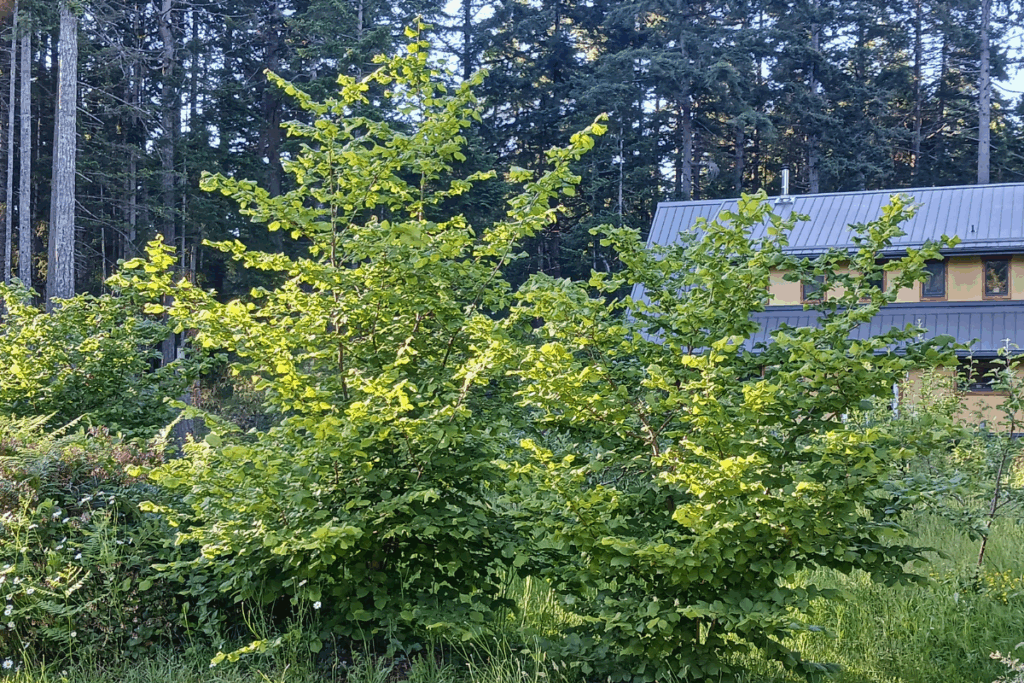
Hazels are wind pollinated, with abundant catkins dispensing pollen in late winter and tiny flowers a few millimetres across. Flowering and pollination windows last a few weeks and timing varies by cultivar and because hazels are not self-pollinators they require compatible pollinator cultivars.
Our site is extremely wet in the winter with groundwater near the surface, and while hazels can handle wet soil, standing water is not conducive to maximum health. To verify the effects, we planted three trees on flat ground and three on raised berms. The first nuts appeared in year three (four year old trees) and the trees now each produce several kilograms with the trees on the berm being visibly larger and producing a higher yield. While it’s a small sample, this pilot project gave us the confidence to scale up.
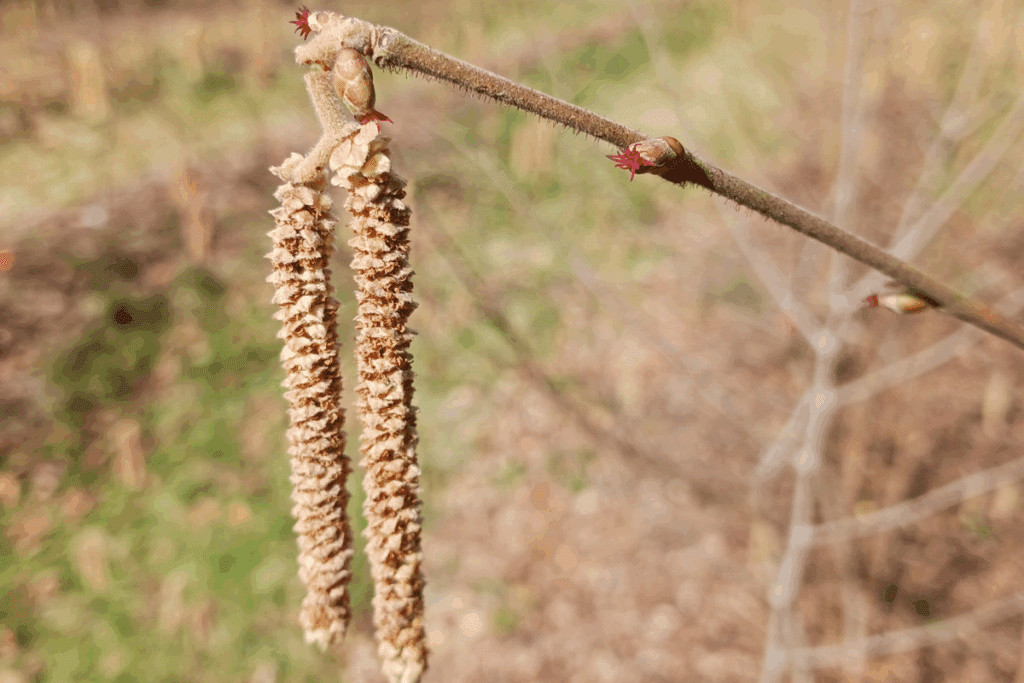
Scaling the System
In March 2022, during the throes of Covid, we pulled the trigger and planted mostly Jefferson and some Yamhill cultivars and pollinators in a high-density system of 95 hazels at 1 metre spacing, distributed across three raised berms, each 4 metres apart. Another 15 trees are planted at the end of the rows plus another dozen trees we grew from seed to act as back-up pollinators are scattered about. In total we have about 120 hazel trees. To save effort we eschew pruning and are allowing the trees to form a high-density hedge that will be harvested by unrolling agricultural ground cover under the trees and shaking them to release the nuts. Once established, the trees will happily produce nuts year after year oblivious to the worries of humans.
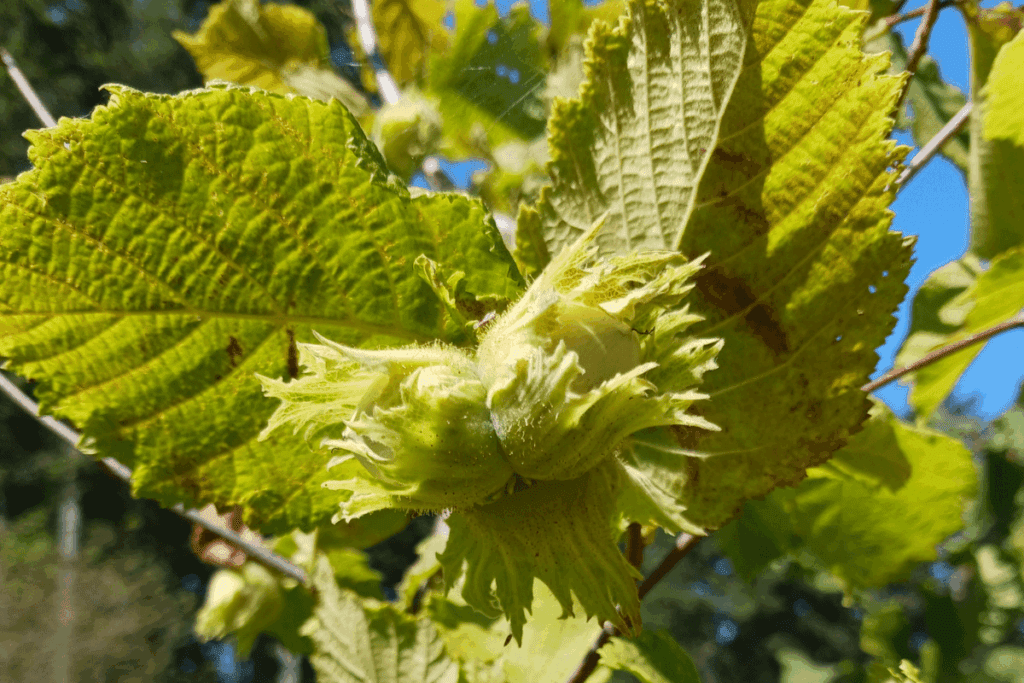
It’s all About the Calories
So how does this all look from a food security perspective? Let’s return to calories.
Assume the average female adult needs 2,000 calories per day and the average male 2,500 calories per day. To build-in a cushion, let’s assume 2,500 calories per day x 365 days = 912,500 calories per person per year. In our household of three, we therefore need about 2,737,500 calories per year.
Packing a hefty caloric punch, one kilogram of hazelnut kernels contain 6,280 calories comprised of about 81% fat, 10% carbohydrates, and 9% protein plus various nutrients, including significant potassium.
2,737,500 / 6,280 calories = 436 kg of hazelnut kernels needed to provide the entire caloric requirements for three adults with a significant buffer. Of course we grow many other foods – apples, pears, figs, strawberries, raspberries, blackberries, blueberries, haskaps, mulberries, plus dozens of types of annual vegetables including carrots, squash, beets and other storage crops. Add in the potential for local forageable plants plus salmon, prawns, crabs, and deer and it’s clear that we don’t need, nor would we want to, only eat hazelnuts. For simplicity, let’s generously assume that the hazelnuts are a staple that cover half of our annual calories: 436 kg / 2 = 218 kg, which is 1,369,040 calories.
Excluding pollinators, our production trees total about 110, mostly Jefferson cultivar. By year five or six, the average yield per Jefferson hazelnut tree is 5 to 6 kg of in-shell nuts of which 45% is kernel and 55% is the shell. Let’s assume we harvest 4 kg per tree – the easy 80% that will fall to the ground – leaving 20% for wildlife unless we desperately need the nuts. Here’s how it spills out:
110 trees x 4 kg per tree x 45% for kernel = 198 kg of kernel x 6,280 calories per kg = 1,243,440 calories. This is pretty close to our target of 1,369,040 calories, or half of our annual need, all from an area roughly 40 metres by 15 metres. Nuts store for a year or more in the shell at room temperature, are easily shelled by hand or with simple machines on winter evenings and can be roasted in the oven or on the woodstove to enhance the flavour and crunch. Another option we might explore in the future is producing hazelnut oil. About 60% of the kernel is recoverable oil and the byproduct is a meal that can be ground up as a flour, added to soups and stews, or fed to chickens and converted into eggs.
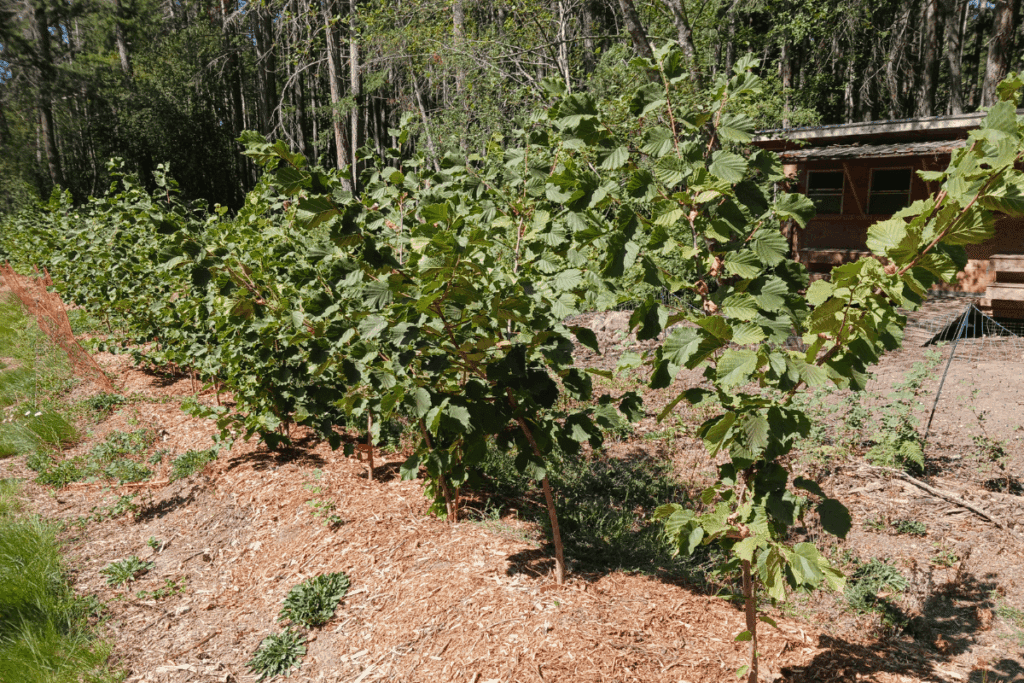
Bonus Products
It’s worth noting that besides the kernels, our hazel system will also gift us with about 240 kg of shells, which can be used as a mulch around trees or burned in the woodstove, providing about a quarter of our annual heating requirements. Some research suggests, which we will test in the coming years, that coppicing the hazels on a multi-year cycle is likely to boost nut production while providing wood suitable for rustic furniture, stakes and fencing, or for the wood stove. When coupled with the nut shells, this wood will likely cover our modest wood fuel requirements of less than a cord of firewood per year.
Community-Scale Food Security
As a thought experiment I scaled up our numbers to our entire island community of roughly 4,500 people, assuming a goal of 50% of total calories coming from a local hazelnut system. Using the numbers above here’s how it works out:
4,500 people x 912,500 calories per person per year x 50% = 2,053,125,000 calories. So how many hazel trees would we require on our island to supply 2 billion calories?
Let’s assume 4 kg per tree x 45% for kernel = 1.8 kg x 6,280 calories per kg = 11,304 calories per tree.
2,053,125,000 / 11,304 = 181,628 trees. That’s a lot of trees. However, it’s only about 40 trees per person and many of these trees could be tucked into existing lots, farms, and acreages. Further, there are large public parks on our island that could be partially turned over to nut production while retaining recreation and biodiversity amenities. A moderately high density of 200 to 250 trees per acre would require between 725 and 900 acres of hazelnut trees. That’s about 3-4 square km on an island of about 58 square km. At higher density, and with some trees distributed on private lots and farms, the land base might drop by half to 350-450 acres
To support this vision of a nut-based food system and this level of production would require considerable community-based organization for planting, management, infrastructure, as well as harvesting and processing equipment. A more tightly-bound community focused on food is not a bad thing in times of crisis. Further, with scale would also come the benefits of efficiencies from mechanical harvesting and processing, including a community-owned oil press.
If decades from now there is complete system collapse then human labour will become abundant and focused on needs and the annual nut harvest could see hundreds, perhaps thousands of people participating as our ancient ancestors once did, and many Indigenous peoples continue to do so. On the other hand, if we avert climate catastrophe then the worst-case scenario is that our island would have a valuable, in-demand crop, significant carbon sequestration in hazel tree biomass, valuable wood products, and the insurance policy of knowing the food is always hanging on the trees should it be needed.
Of course, nut systems, even fast-growing hazels, aren’t built overnight and nor are the vibrant land-based cultures that have thrived on nuts as the pillar of their food systems. So the best time to get started is now, before the next black swan lands or the slow burn of climate catastrophe becomes a raging inferno.
If you think this vision isn’t quite as nutty as it sounds then you might be interested in Elspeth Hay’s powerful and inspiring new book Feed Us with Trees, which takes a deep dive into how nuts were once, and could again be, the backbone of a different food system.
It’s time to get cracking!
